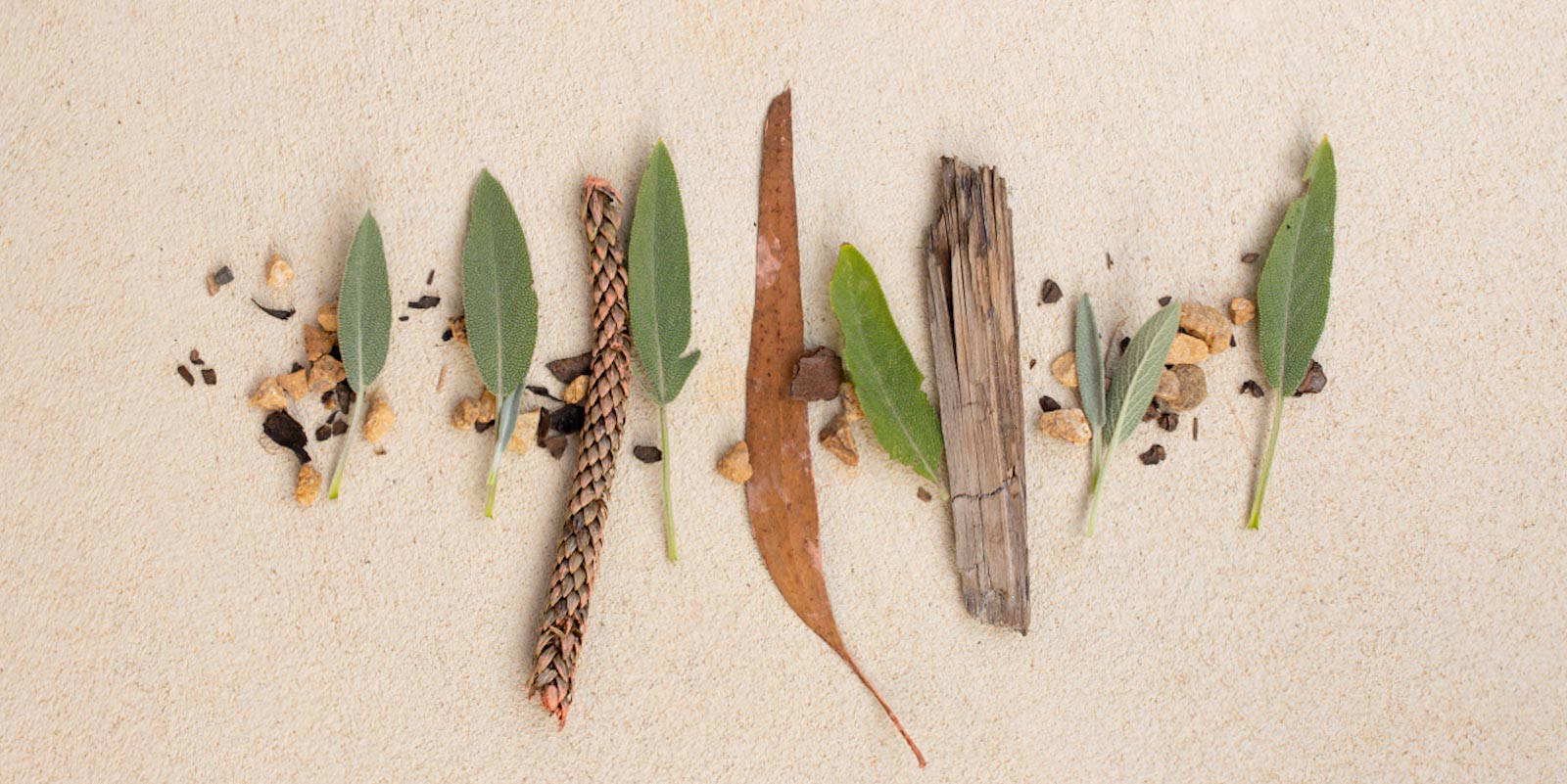
Natural materials come from nature, with minimal interference from humans. Recent research and trends promote natural materials and environments. They can make people happier and they are also sustainable.
Because children are surrounded by so many processed materials, nature is incredibly important. Many children don't know where wood or clay comes from and early childhood educators can use materials to teach children about the world.
NQS and EYLF learning outcomes
The National Quality Standard requires childcare services to care for the environment and support children in becoming environmentally responsible (3.2.3).
The Early Years Learning Framework supports children connecting with natural materials (4.4) that teach respect for the environment (2.4) and provoke curiosity, imagination, creativity (4.1), problem solving, inquiry, experimentation, hypothesising, researching and investigating (4.2).
Types of natural materials
Animal materials
The texture of animal scales sparks curiosity. Animals use scales to protect their bodies, along with animal skin (leather and hides) and fur.
Bones also protect animals by providing a supporting structure.
Animals produce natural products that humans can benefit from, including human mothers who produce milk for their babies.
Several animals produce venom, which can be very dangerous to humans. Bees produce venom, but they make up for it with yummy honey and beeswax.
Ocean creatures can leave shells for us to collect on the beach, and in some parts of Australia you'll find coral. If you're lucky enough to find a sea sponge, you can use it to exfoliate your body.
Plant materials
Big plants, small plants. They all produce very useful materials, we eat them every day. Some leaves are vegetables. Seeds can be used to grow a garden, and some make healthy snacks.
Wood is used to build houses and furniture. Tree bark has been used to make roofs. Children can use sticks and branches to build their own cubby houses.
Flowers are lovely decorations that we can give as gifts.
Earthy materials
When you walk outside, there are amazing materials under your feet. The soil is great for gardening. Some plants prefer sand and others grow well in clay.
Rocks make good building materials. Mud is fun for children to slide around in.
Natural fibres
Our clothes, bedding and furniture is made from natural fibres (e.g. silk, wool, plant fibres), which can come from animals or plants.
Water
We all need water to survive, to drink and clean things with. But it comes in different forms, including ice and snow. Frozen water makes skiing fun and slushies delicious.
More gifts from nature
Some natural things are tricky to touch, but we know they are there, like air. We all need oxygen to survive.
In the sky, clouds provide shade from the sun. And rainbows provide magic and wonder.
Fire can be both dangerous and comforting. We can't touch it, but it heats our homes and cooks our food.
Learning experiences
Explore through child-initiated and child-led play
Early childhood educators often feel pressured to plan structured activities. Nature play is about children following their intuition and engaging freely with their world.
Educators can still support free play by planning the environment and materials.
Encourage children to explore natural materials through hands-on activities that involve observation, touch, sensory stimulation and manipulation.
Set up a table with a collection of natural materials, or add them to a trough or basket. Let children play freely with natural loose parts. Talk to them about their different properties and characteristics.
Alternatively, take a walk in nature. The materials have already been prepared.
Create art from sticks, stones and feathers
Use natural materials to create works of art. Artworks can be flat or three-dimensional sculptures. They can be displayed on a table, a wall, or hung from a ceiling. View the Sticks, Stones & Feathers Exhibition at Boorai, a children's art gallery in Melbourne.
- Natural materials like clay, ochre and charcoal can be used to create art.
- Encourage children to observe nature's patterns in objects like leaves or shells, and then attempt to draw them using black pen or lead pencil.
- Balance stones and pebbles in a tower formation, or build sand castles as land art.
- Use grasses in weaving and textile projects.
- Arrange tiny objects into a mosaic or mandala.
- Use textured, natural objects in printmaking.
Plan a nature treasure hunt
Take children on a walk outside, either in the playground or your neighborhood. Provide children with baskets to collect small natural objects like feathers and stones.
Examine and discuss each item. Will you use them to make something or return them to nature?
Learning environments
Early childhood professionals can enhance learning environments by featuring elements from nature. Try these ideas in your classroom:
- Reduce man-made decor and decorations. Replace them with things made from natural materials.
- Unfortunately, many childcare centres have unnatural outdoor spaces. Change this by designating a small outdoor area where children can engage directly with nature. Plant a small fairy garden or add water, tree stumps, branches and stones to your sand pit.
- Encourage children to start gardening. Herbs, vegetables and native plants can be grown indoors and outdoors.
- Play nature sounds instead of background music.
Family and community connections
Connect with culture
Natural materials are often connected with different cultures and traditions. Invite family and community members, including Aboriginal elders, to share their cultural knowledge and experience in relation to natural objects. Use these stories as inspiration for new hands-on learning experiences.
